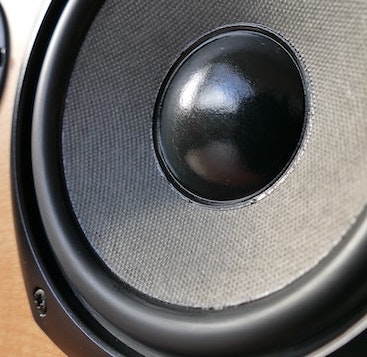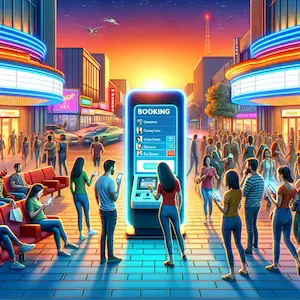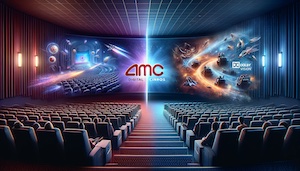In the ever evolving world of audio technology, two giants, Dolby and DTS, consistently vie for the top spot in delivering unparalleled sound experiences. As the industry progresses, consumers are left pondering which of these titans offers superior audio quality and why.
In this comprehensive article, we will delve into the history, technologies, advantages, and usage of Dolby and DTS. We will also explore the current market trends and future directions of the industry to help you make an informed decision on which codec is the right choice for your home theater or movie watching. So, sit back, relax, and let us guide you through the fascinating world of Dolby and DTS.

Table of Contents
Introduction
Are you an audiophile, or just someone who appreciates high-quality sound in movies and music? If so, you might have heard about Dolby and DTS, two of the most popular surround sound codecs used in home theaters and cinemas. In this article, we’ll discuss the differences between Dolby and DTS, the advantages of each codec, and which one might be the best choice for you, based on your preferences and setup. Let’s dive right in!
Dolby: A Brief History
Dolby Digital
Dolby Laboratories, founded in 1965 by Ray Dolby, has been a pioneer in audio technology for decades. Dolby Digital, also known as AC-3, was introduced in the early 1990s and quickly became the standard audio codec for DVD releases, HDTV broadcasts, and streaming services. Dolby Digital supports up to 5.1 channels of audio, delivering an immersive audio experience for movies and television shows.
Dolby Atmos
Dolby Atmos, introduced in 2012, is an object-based audio format that takes surround sound to new heights – quite literally. With Atmos, audio engineers can place individual sounds in a 3D space, creating an incredibly immersive audio experience. This technology allows sound to come from above, below, and all around you, providing a more realistic and engaging listening experience.
DTS: A Brief History
DTS-HD Master Audio
Digital Theater Systems (DTS), founded in 1993, is another key player in the audio codec market. DTS-HD Master Audio, introduced in 2004, is a lossless audio codec that supports up to 7.1 channels of high-resolution audio. This format is often found on Blu-ray Discs, providing an uncompressed, high-quality audio experience for movies and music.
DTS:X
DTS:X, introduced in 2015, is the object-based audio format developed by DTS. Similar to Dolby Atmos, DTS:X allows audio engineers to place individual sounds within a 3D space, creating a more immersive audio experience. DTS:X offers flexibility in speaker placement and can adapt to your existing home theater setup.
Comparing Audio Quality
Compression and Bitrates
When comparing Dolby and DTS codecs, it’s important to consider the compression and bitrates used by each format. Dolby Digital uses a lossy compression method and supports bitrates up to 640 kbps, while DTS-HD Master Audio uses lossless compression and can support bitrates up to 24.5 Mbps. Generally, higher bitrates result in better audio quality, as more data is retained during the compression process. This means that DTS-HD Master Audio often delivers a more accurate and detailed audio reproduction compared to Dolby Digital.
Channel Support and Immersion
Both Dolby Atmos and DTS:X provide immersive, object-based audio experiences. Dolby Atmos supports up to 128 audio objects, while DTS:X supports up to 32 objects. However, the number of objects supported by each format may not be as important as the overall implementation and mixing of the audio content. Depending on the content and the skills of the audio engineers, both Dolby Atmos and DTS:X can deliver immersive and engaging audio experiences.
Licensing and Adoption
Dolby has been more widely adopted in the film and streaming industry compared to DTS. This is partly due to Dolby’s extensive licensing agreements with content providers and device manufacturers. As a result, you may find more movies and shows with Dolby audio formats compared to DTS. However, many Blu-ray Discs offer both Dolby and DTS audio options, allowing you to choose the codec that best suits your home theater setup.
Advantages of Dolby
Dolby has several advantages over DTS, including:
- Wider adoption in the industry, leading to more content availability.
- Dolby Atmos provides a highly immersive audio experience with its advanced object-based audio technology.
- Strong compatibility with a wide range of devices and home theater equipment.
- Ecosystem Integration: Dolby’s extensive product ecosystem includes not only audio codecs but also video technologies like Dolby Vision. This integration allows for a seamless and harmonious experience when using both Dolby audio and video technologies in your home theater setup.
- Constant Innovation: Dolby consistently invests in research and development to improve its existing technologies and create new, groundbreaking solutions. This dedication to innovation means that Dolby products are continually evolving and staying ahead of the curve.
- Ease of Setup: Dolby provides comprehensive guidelines and recommendations for speaker placement and configuration, making it easier for users to set up their home theater systems for optimal performance with Dolby codecs.
Advantages of DTS
DTS also has its own set of advantages, including:
- DTS-HD Master Audio offers higher bitrates and lossless audio quality, resulting in more accurate and detailed sound reproduction.
- DTS:X provides flexibility in speaker placement, making it easier to adapt to different home theater setups.
- DTS codecs tend to be less compressed, which can result in a more dynamic and expansive soundstage.
- High-Quality Audio for Music: DTS is well-regarded for its ability to deliver high-quality audio for music listening. The DTS-HD Master Audio codec is especially popular among audiophiles for its lossless audio reproduction and support for high-resolution audio formats.
- Adaptive Speaker Remapping: DTS:X includes a unique feature called Adaptive Speaker Remapping, which can optimize the audio experience based on your specific speaker layout. This feature ensures that you get the best possible audio performance, even if your speaker setup doesn’t match the recommended configuration.
- Compatibility with Legacy Content: DTS has a strong track record of backward compatibility, which means that even older DTS-encoded content can still be enjoyed with newer DTS codecs and home theater equipment. This makes it easy for users to build a diverse library of content without worrying about compatibility issues.
Dolby vs. DTS: The Battle for Movie Theater Supremacy
When it comes to delivering awe-inspiring sound experiences at movie theaters, Dolby and DTS have been the leading contenders for decades. Both companies have developed a range of audio codecs and technologies specifically designed to enhance cinematic audio experiences. In this section, we will compare Dolby and DTS in the context of movie theaters and discuss how they stack up against each other in terms of audio quality, immersive experiences, and industry adoption.
Dolby: The Pioneer of Cinematic Audio
Dolby has long been the dominant force in the movie theater industry, thanks to its groundbreaking audio technologies and innovative solutions. Dolby’s journey began with Dolby Stereo, followed by Dolby Digital, and more recently, Dolby Atmos.
Dolby Atmos, the company’s flagship object-based audio format, has revolutionized the cinematic audio landscape by providing an immersive and highly dynamic sound experience. With its ability to support up to 128 audio objects, Dolby Atmos allows sound engineers to place individual sounds anywhere in the theater, creating a truly lifelike and three-dimensional audio experience for moviegoers.
Dolby’s widespread adoption in movie theaters can be attributed to its strong industry partnerships and extensive licensing agreements. Moreover, the company has consistently invested in research and development, ensuring that its technologies remain at the forefront of the industry.
DTS: A Formidable Challenger
While Dolby has been the more prominent player in the movie theater industry, DTS has carved out a niche for itself as a formidable competitor. DTS’s success can be attributed to its focus on delivering high-quality, lossless audio with minimal compression.
DTS:X, the company’s object-based audio format, is a direct competitor to Dolby Atmos, offering an immersive sound experience with support for up to 32 audio objects. While DTS:X may not support as many audio objects as Dolby Atmos, the overall implementation and mixing of the audio content play a crucial role in determining the quality of the end product.
One key advantage of DTS:X is its flexibility in speaker placement, which allows theater owners to adapt the technology to their specific setups more easily. DTS:X also features Adaptive Speaker Remapping, which optimizes the audio experience based on the theater’s unique speaker layout.
Comparing Dolby and DTS in Movie Theaters
When comparing Dolby and DTS in the context of movie theaters, several factors come into play:
- Audio Quality: Both Dolby Atmos and DTS:X deliver high-quality, immersive audio experiences. The choice between the two may come down to personal preferences or the specific theater setup. It’s worth noting, however, that DTS codecs tend to be less compressed, which can result in a more dynamic and expansive soundstage.
- Immersive Experiences: Dolby Atmos has a slight edge over DTS:X in terms of the number of audio objects it supports. This allows for more precise placement of sounds and can create a more enveloping experience for moviegoers. However, the skills of the sound engineers and the quality of the audio mix also play a significant role in determining the overall experience.
- Industry Adoption: Dolby is more widely adopted in the movie theater industry compared to DTS. This can be attributed to Dolby’s extensive licensing agreements, strong industry partnerships, and long-standing reputation. As a result, moviegoers are more likely to encounter Dolby-equipped theaters than those with DTS.
Choosing the Right Codec for You
Home Theater Setup
When deciding between Dolby and DTS, consider your existing home theater setup. If your equipment supports both codecs, you may want to experiment with each format to see which one provides the best audio experience for your specific configuration.
Content Availability
Content availability is another factor to consider. If most of your media library consists of DVDs, streaming services, or HDTV broadcasts, Dolby may be the better choice due to its widespread adoption. However, if you primarily watch Blu-ray Discs, you may have the option to choose between Dolby and DTS codecs, allowing you to select the one that best suits your preferences.
Conclusion
As of today, Dolby holds a more prominent position in the industry and is more widely used, particularly in streaming services, HDTV broadcasts, and movie theaters. This is due to Dolby’s extensive licensing agreements, industry partnerships, and the company’s continuous investment in research and development. The widespread adoption of Dolby Atmos for immersive audio experiences, as well as Dolby Vision for HDR video content, has also played a significant role in solidifying Dolby’s position in the market.
That being said, DTS remains a popular choice for high-quality audio, particularly for Blu-ray Discs and among audiophiles. The introduction of DTS:X as an object-based audio format has allowed DTS to compete with Dolby Atmos in providing immersive audio experiences, although it is not as widely adopted.
As for the future direction of the industry, several trends are emerging:
- Object-based audio formats: The industry is increasingly moving toward object-based audio formats like Dolby Atmos and DTS:X, which provide a more immersive and realistic audio experience compared to traditional channel-based formats. As more content creators adopt these technologies, we can expect a growing number of movies, TV shows, and music to feature object-based audio.
- Streaming services and digital distribution: With the increasing popularity of streaming services and digital distribution platforms, the demand for high-quality audio codecs that can deliver an optimal listening experience while minimizing bandwidth usage is growing. Both Dolby and DTS are working to improve their codecs to meet these demands, with Dolby’s Dolby Digital Plus and DTS’s DTS-HD High-Resolution Audio being prime examples.
- Smart home integration: As smart home technology becomes more prevalent, there is a growing demand for seamless integration between audio codecs and smart home ecosystems. Companies like Dolby and DTS are likely to invest in partnerships and collaborations with smart home technology providers to ensure their audio solutions are easily compatible with the latest smart home devices.
- Virtual reality and gaming: The virtual reality (VR) and gaming industries are also driving innovation in audio technology. As VR experiences and games demand highly immersive audio to create a convincing virtual environment, we can expect both Dolby and DTS to develop new technologies and codecs tailored for these applications.
Ultimately, both Dolby and DTS offer high-quality audio experiences, with each codec having its own set of advantages. When choosing between the two, consider factors such as your home theater setup, content availability, and personal preferences. By understanding the differences between Dolby and DTS, you can make an informed decision and optimize your audio experience.
FAQs
Is Dolby Atmos better than DTS:X?
Dolby Atmos and DTS:X are both object-based audio formats that provide immersive audio experiences. The choice between the two depends on your personal preferences and your home theater setup.
Can I use both Dolby and DTS in my home theater system?
Yes, many modern home theater receivers and devices support both Dolby and DTS codecs, allowing you to switch between them based on your preferences and content availability.
See Related Posts

Average Cinema Screen Size

Movie Theater Popcorn at Home

Movie Theaters on Cruise Ships

Recliner Seat Movie Theater

Do you have to book Cinema Tickets in advance?

AMC Digital vs. Dolby

Best Seats in Theater for Movie

Biggest IMAX Screens in NYC

Nutritional Value of Movie Theatre Popcorn
